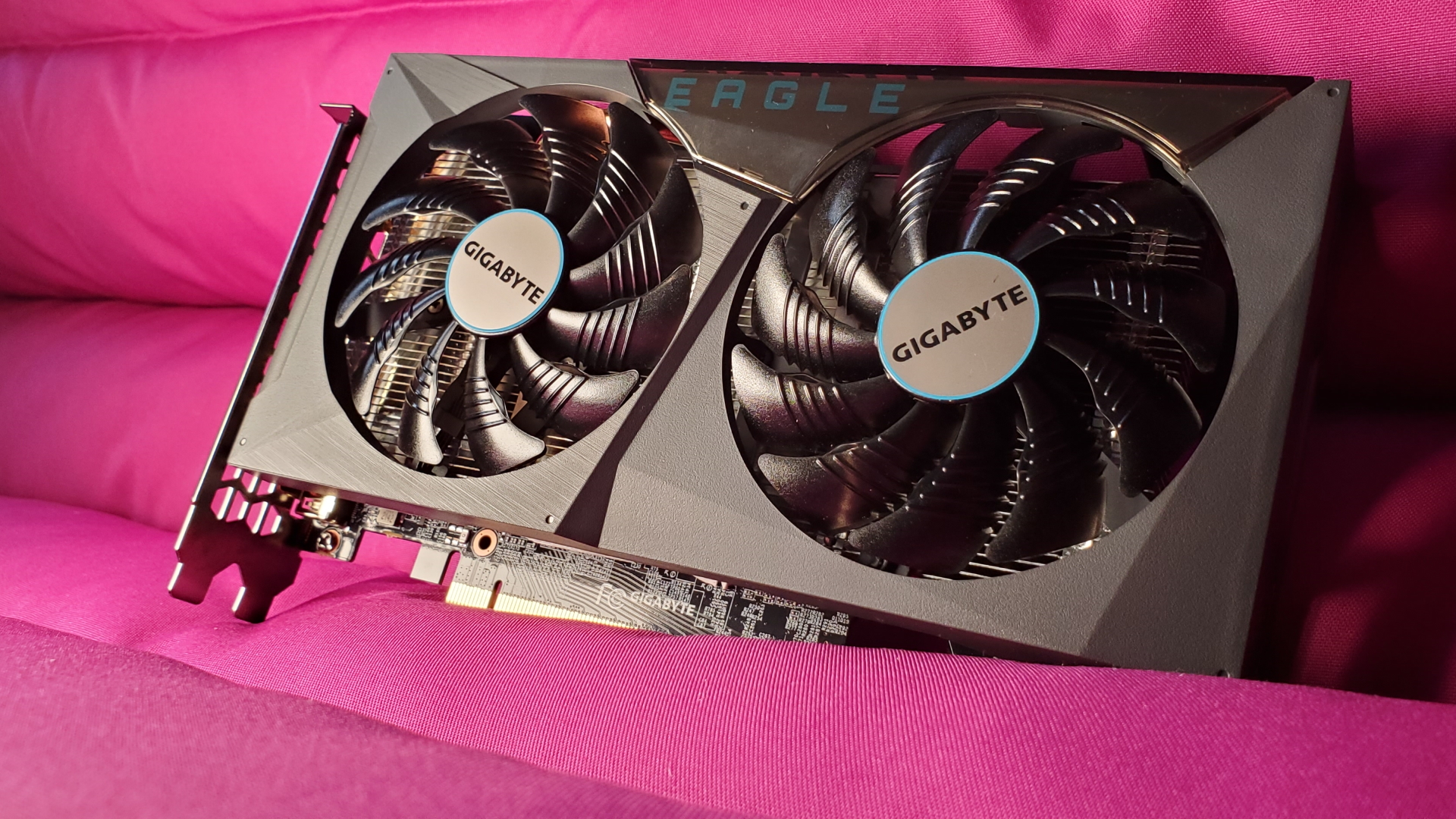Our Verdict
We're essentially looking at Nvidia taking away the 'GTX' prefix and giving us an RTX 1660 Ti. That makes it a good 1080p GPU, though the addition of DLSS support is far more tempting a proposition, especially at this level of GPU, than the promise of 1080p ray traced gaming. Fingers crossed it stays in stock at a reasonable price.
For
- DLSS and ray tracing support
- Way faster than an RX 6500 XT
Against
- Should be at least RTX 2060 performance
- Long term stock and pricing unknowable
PC Gamer's got your back
Graphics cards are a real pain point for PC gaming. Hell of an opening sentence to a new GPU review, I know, but that is the world we inhabit in 2022. Supply is constrained and demand is as sky-high as the prices of said GPUs. So, it was with a faint taste of something akin to hope on my lips I approached the launch of new mainstream graphics cards from both AMD and Nvidia.
If you've peeped the lowest score I think I've given anything in my time since coming back to PC Gamer then you'll know how the AMD Radeon RX 6500 XT turned out. Now it's Nvidia's turn to either save the day or disappoint us all with the GeForce RTX 3050. I mean, there can't be any middle ground, can there? Somewhat inevitably, that's going to depend very much on your point of view.
Still, I'm feeling a little better about the budget-conscious end of the PC gaming market since enjoying the fruits of Intel's Core i5 12400 labours, and its seemingly accidental overclocking bounty. A $200 chip that can comfortably nail 5.2GHz, with an affordable motherboard platform to boot? Well, that has the potential to be the perfect base for your next gaming rig. All we need is an affordable GPU to go with it.
This is where Nvidia steps in with the nominally $250 RTX 3050, promising to blow the RX 6500 XT out of the water for just $50 more. As it turns out MSRPs evaporate as soon as the first wave of GPUs sell out—generally in the first ten minutes—so we have the $280 Gigabyte RTX 3050 Eagle here, which is actually marginally cheaper than the $300 Gigabyte RX 6500 XT we reviewed as our first taste of AMD's budget GPU.
And it does indeed blow the RX 6500 XT out of the water. But we are still essentially talking about a new Nvidia graphics card with GTX 1660 Ti gaming performance, though one with the added veneer of ray tracing hardware and DLSS support.
Nvidia RTX 3050 specs
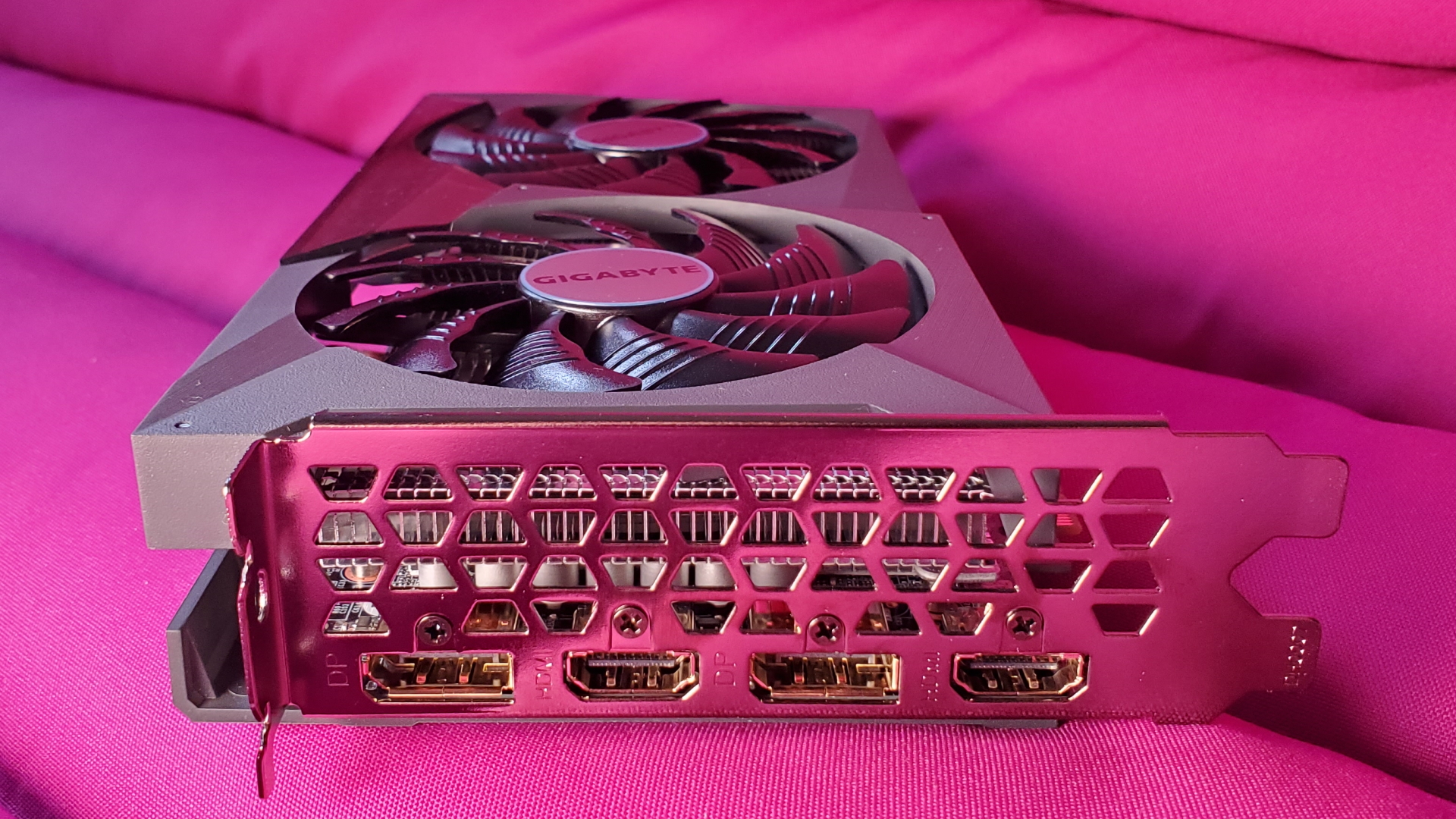
What are the RTX 3050 specs?
The comparisons both AMD and Nvidia have made with their new cards generally hides where they actually sit in terms of relative performance. Both have spent an irrelevant amount of time putting their new cards up against the GTX 1650, with AMD also pitting the RX 6500 XT against the RX 570, and Nvidia the RTX 3050 against the GTX 1050.
None of these comparisons make sense. The AMD card's poor performance is more ably highlighted by a comparison with the RX 5500 XT and RX 480—similarly specced and priced cards from generations back—and it is more meaningful to compare the RTX 3050 with the $279 GTX 1660 Ti than the $149 GTX 1650 or GTX 1050.
| Header Cell - Column 0 | RTX 3050 | RTX 2060 | GTX 1660 Ti |
|---|---|---|---|
| GPU | GA106 | TU106 | TU116 |
| Transistors | 12 billion | 10.8 billion | 6.6 billion |
| Die size | 276mm2 | 445mm2 | 284mm2 |
| Streaming multiprocessors (SMs) | 20 | 30 | 24 |
| CUDA cores | 2560 | 1920 | 1526 |
| Tensor Cores | 80 | 240 | NA |
| RT Cores | 20 | 30 | NA |
| ROPs | 48 | 48 | 48 |
| Base clock speed | 1,552MHz | 1,365MHz | 1,500MHz |
| Boost clock speed | 1,777MHz | 1,680MHz | 1,770MHz |
| Memory | 8GB GDDR6 | 6GB GDDR6 | 6GB GDDR6 |
| Memory bus | 128-bit | 192-bit | 192-bit |
| Memory bandwidth | 224GB/s | 336GB/s | 288GB/s |
| TGP | 130W | 160W | 120W |
| Reference price | $249 | $349 (then $299) | $279 |
The GA106 GPU Nvidia reportedly has at the heart of the RTX 3050 is a smaller version than that used in the RTX 3060 which makes it roughly the same size as the chip used in the old GTX 1660 Ti. It does though have almost double the number of transistors at its heart and, thanks to the excellent Ampere architecture it comes with over one thousand more shaders inside it.
It is also notable that AMD's latest GPU, the Navi 24 silicon inside the RX 6500 XT is a 107mm2 chip, while the GA106 is something in the region of 276mm2. That's something which will likely come into play when it comes to manufacturing and the numbers of GPUs that each company can produce to fulfil the demand for their cards.
Those 2,560 CUDA cores in the RTX 3050 are split between 20 SMs which also then delivers 20 RT cores and 80 Tensor cores. It's those last two specs that separate the RTX 3050 from its GTX 1660 Ti brethren and ought to make it a far more tempting choice for the mainstream gamer. The RT cores are what allow for ray tracing and the Tensor Cores then allow you to enable DLSS to make ray tracing actually playable at a decent frame rate, all thanks to the magic of AI-powered super sampling.
The RTX 3050 has a similar total graphics power (TGP) compared with the GTX 1660 Ti, too, with 130W vs. 120W for the older card. Along with that extra 10W, you also get another 2GB of GDDR6 memory for a total of 8GB. Though that runs on a thinner 128-bit aggregated memory bus compared with the GTX 1660 Ti's 192-bit bus, which is why you end up with less memory bandwidth as a result.
Nvidia RTX 3050 performance
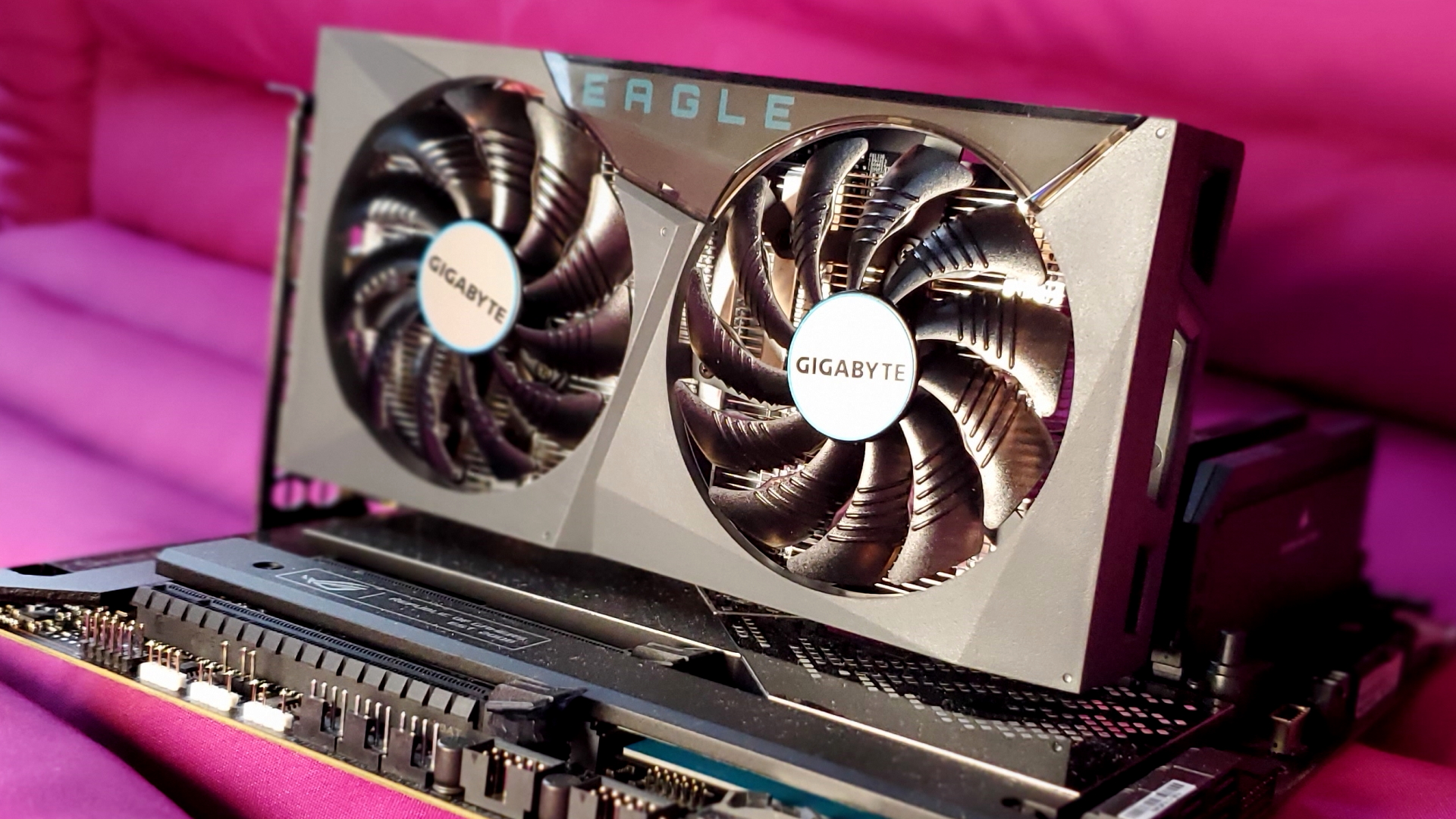
How does the RTX 3050 perform?
Our standard game benchmarks are always carried out without any form of resolution output modifiers to get an idea of the raw performance of any new GPU. As such we don't traditionally test with DLSS or FidelityFX Super Resolution enabled. Though, as more and more games are shipping with the technology, and a wider breadth of hardware supports it, it always has to be a consideration when we talk about the overall package of a new release.
So, while the benchmarks highlight where the RTX 3050 is more or less akin to the GTX 1660 Ti in terms of its straight gaming performance, there is the promise of DLSS working those Tensor Cores to actually make the card a pretty capable 1440p gaming GPU where the technology is enabled.
The same was true of the RX 6500 XT, with FidelityFX Super Resolution, too. But its severely restricted frame buffer means game performance is still pretty weak even with FSR enabled. It's also not as effective a solution as Nvidia's hardware-based DLSS tech.
1080p gaming performance








1440p gaming performance








New vs. Old







Upscaling performance


System performance



Nvidia RTX 3050 analysis
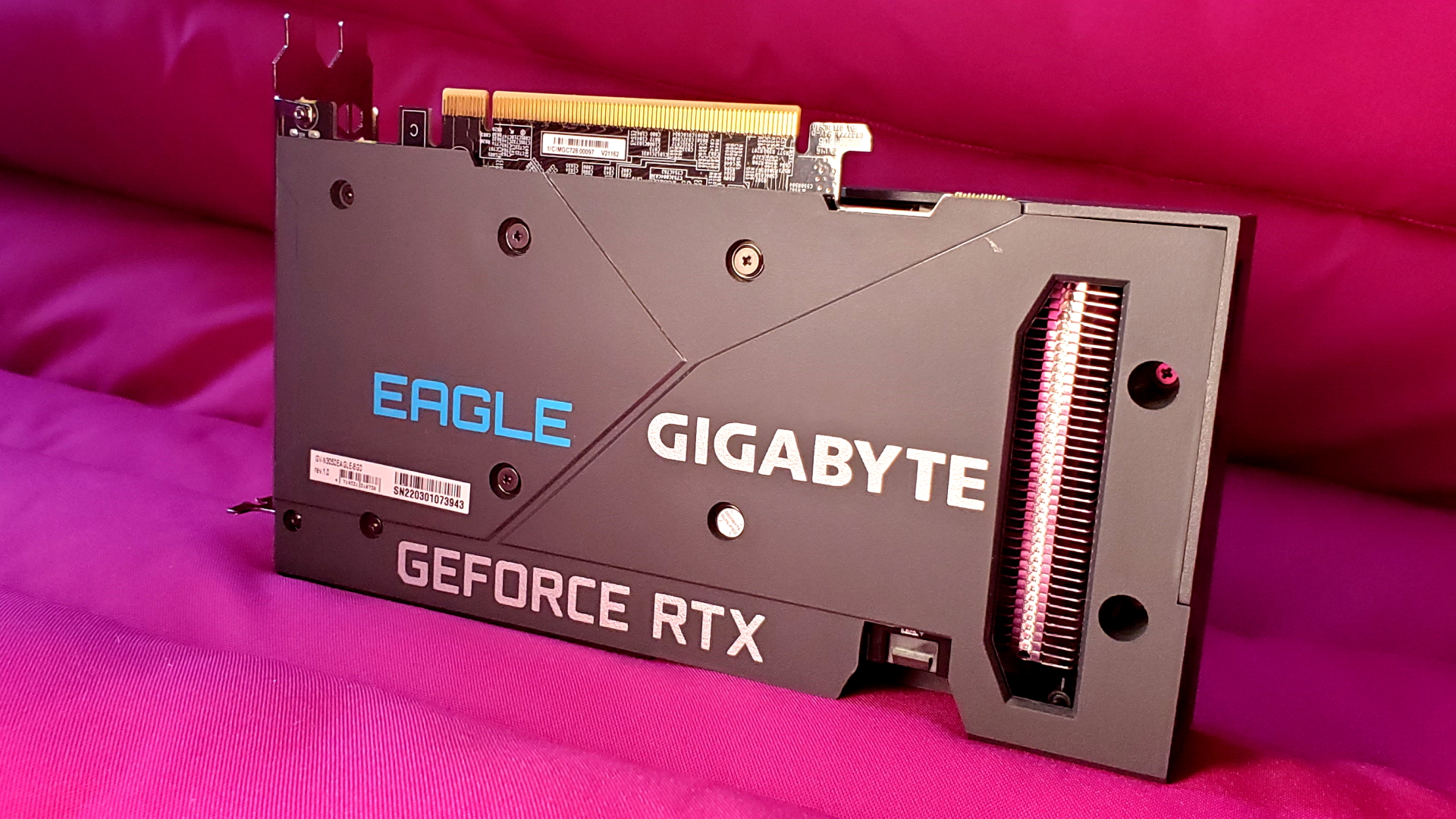
How does the RTX 3050 stack up?
The GeForce RTX 3050 is a funny one. You could say Nvidia has pulled a similar move to AMD in creating a new graphics card with the same performance as that of a previous generation for effectively the same amount of money. We rightly castigated AMD for essentially giving us a worse version of the RX 480 nearly six years later, but you could say Nvidia has done only marginally better by just stepping one generation back to slightly better than GTX 1660 Ti performance.
Though that is a little unfair because the Ampere architecture at the heart of the RTX 3050 is fundamentally better than that of the Turing GPU at the heart of the GTX 1660 Ti. Again, the same can be said of the RDNA 2 tech beating beneath the RX 6500 XT's oversized coolers, when compared to the Graphics Core Next (GCN) of the RX 480.
This is where AMD's preference for openness and an aversion for fixed-function hardware does kind of backfire. While FSR is supported on a range of older AMD graphics cards, DLSS is restricted to those with the RTX prefix and the necessary GPU hardware. And that gives the RTX 3050 a definite edge over its Turing forebears and means that, while it is essentially the same price and very close in performance, the extra feature set makes it just about a worthy successor.
By a 2022 reckoning anyways. Which is always skewed away from the previous norms of the GPU world. Though if you're currently running a GTX 1660 Ti, I'd still say it's probably not worth the upgrade.
I am a huge fan of DLSS, however, and it does mean that the RTX 3050 isn't just a good 1080p gaming GPU, it's actually capable of running happily on a 1440p display too. Though DLSS isn't in every game and Nvidia's new game-agnostic Nvidia Image Scaling (roughly analogous to FSR) is available to its older GPUs, too.
But you do also get a little 1080p ray tracing support with the new RTX 3050. Again, that's thanks to DLSS now offering support for 1080p as a native resolution and rendering below that native res. There's less detail available, so it's tougher to get a great image, but DLSS still does an impressive job at allowing games such as Control and Wolfenstein Youngblood to offer playable ray tracing on a sub-$300 GPU.
The tough thing is our traditional expectations, though. We always want more from successive generations, and that means we want more performance, not just access to more features from our GPUs. At a minimum, I would have wanted RTX 2060 levels of raw gaming performance, especially as that was a $299 card at the start of 2020 and we're looking at $280 cards right here with the RTX 3050.
Then there's the thorny issue of stock, and how much Nvidia is able to get to its partners to make graphics cards and for them to get them into the channel for us to buy. We've been told that there is healthy stock available at launch and that there will definitely be reference-priced units there, too. But we're always told that, and stock always vanishes.
It will this time, too, and the $250 reference-price units will last as long as the initial stock does, then I would bet we never see another MSRP card available again. That's part of the problem with Nvidia not creating reference-priced Founders Edition cards at this level of the GPU stack—there's no competition for manufacturers wanting to pump out higher-priced options, and so that's all we'll see in retail after tomorrow's launch.
Where I wanted at least RTX 2060 performance, I've got GTX 1660 Ti frame rates with a little RTX frosting on top
The hope is that, like the RX 6500 XT, there will continue to be RTX 3050 cards available weeks after launch and, even if they're not at MSRP, aren't topping the $300 mark. Please.
Whether that happens remains to be seen. AMD has cut the RX 6500 XT GPU to shreds, so it's less than half the size of the GA106 GPU in the RTX 3050, which means it can theoretically manufacture far more in the same amount of time because it gets more chips out of the same size silicon wafer. Maybe that's why there are more Radeon cards available a week on from launch, maybe AMD's gamble has paid off.
We've got to hope that Nvidia is still able to keep the chips flowing from Samsung's 8nm fabs so the RTX 3050 remains in stock at a reasonable price. Because, while it's maybe not the stellar budget GPU we were hoping for, it's still an effective sub-$300 graphics card capable of utilising the best GPU tech of a generation and delivering a gaming upgrade for those on lower-spec silicon than a GTX 1660 Ti.
Nvidia RTX 3050 verdict
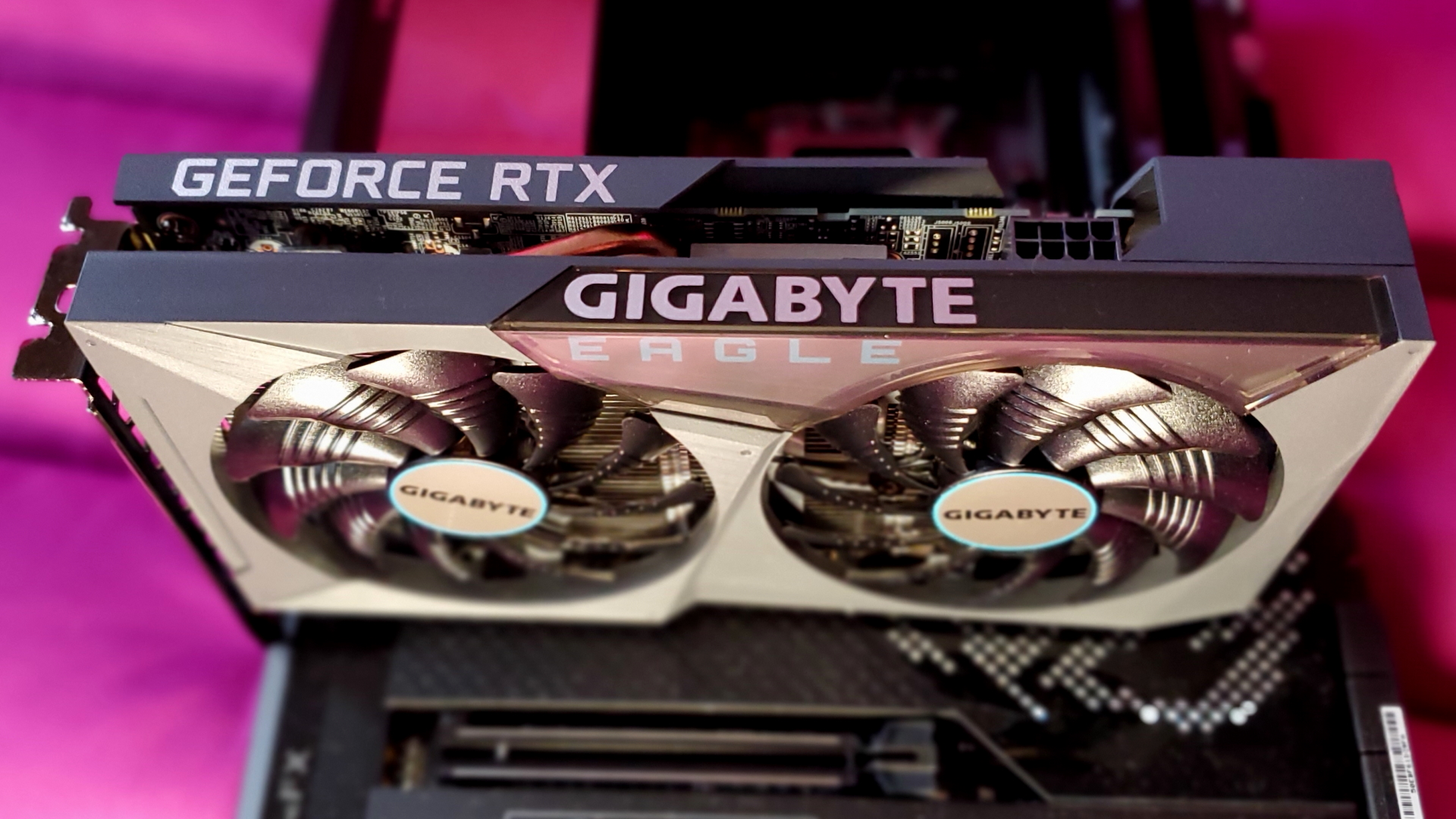
Should you buy an RTX 3050?
AMD and Nvidia have taken different approaches to the conundrum of creating a high-volume budget GPU in a chip shortage. AMD slashed the size of its silicon, betting on high clock speeds to give it just enough performance to offer some mainstream 1080p gaming chops, while its teeny tiny GPU meant it could manufacture more GPUs than the competition and effectively become the only option at this price.
Nvidia has gone for a more performance-first tactic. Where the RTX 3050 and RX 6500 XT are effectively sitting in the same price bracket, you'd absolutely rather have the Nvidia card for the money. At worst it's 20% faster than the Radeon GPU, and can actually deliver 1440p gaming in places where the 4GB frame buffer of the RX 6500 XT won't allow it to tread foot. Throw the magic of DLSS into the mix—still a more effective solution than FSR—and the RTX 3050 looks like a certain winner in this head-to-head.
But, where I wanted at least RTX 2060 performance, I've got GTX 1660 Ti frame rates with a little RTX frosting on top. Sure, that's tasty where it sticks, but is another example of a card designed and priced within the limits of a pandemic and a GPU shortage, rather than showing off Nvidia's silicon wizardry to its fullest.
We're essentially looking at Nvidia taking away the 'GTX' prefix and giving us an RTX 1660 Ti. That makes it a good 1080p GPU, though the addition of DLSS support is far more tempting a proposition, especially at this level of GPU, than the promise of 1080p ray traced gaming. Fingers crossed it stays in stock at a reasonable price.

Dave has been gaming since the days of Zaxxon and Lady Bug on the Colecovision, and code books for the Commodore Vic 20 (Death Race 2000!). He built his first gaming PC at the tender age of 16, and finally finished bug-fixing the Cyrix-based system around a year later. When he dropped it out of the window. He first started writing for Official PlayStation Magazine and Xbox World many decades ago, then moved onto PC Format full-time, then PC Gamer, TechRadar, and T3 among others. Now he's back, writing about the nightmarish graphics card market, CPUs with more cores than sense, gaming laptops hotter than the sun, and SSDs more capacious than a Cybertruck.
